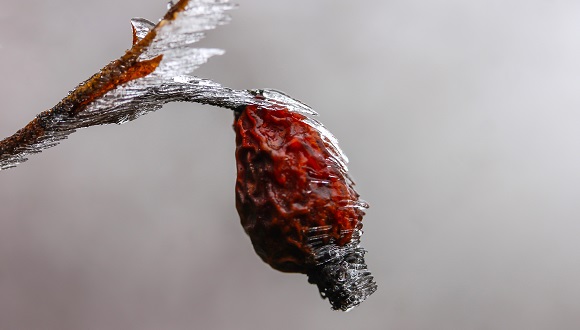Plants’ annual growing season has lengthened, exposing them to frost more often at a time when they are particularly sensitive. That can be detrimental to their activity and lead to substantial crop yield losses.

It is not unusual to hear about frost in March having catastrophic effects when the phenology of almond or fruit trees changes and they blossom early. Climate change has brought flowering and leafing forward and reduced the number of frost days each year. Surprisingly, however, the number of frost days plants in Europe have to deal with during their growing season, following winter dormancy, is greater than it was 30 years ago. As their leaves and flowers appear earlier (sometimes even before spring has begun) and they remain active for longer (almost until winter), they are more likely to be exposed to frost. “We’ve seen that the most affected regions are those where the extension to plants’ activity period has been greatest, as they’re exposed to frost more often, mainly in spring”, says Josep Peñuelas, a CSIC researcher based at CREAF who has co-authored a study on the subject published in Nature Communications.
In Europe, plants' growing season now begins sooner than in the past. In a period of activity during which they are particularly sensitive, they currently have to cope with three more frost days a year than they did three decades ago.
Over the last three decades, the total number of days per year on which temperatures dip below 0ºC has gradually decreased. In Europe, in general, plants’ growing season now begins sooner than in the past. In a period of activity during which they are particularly sensitive, they currently have to cope with three more frost days a year than they did 30 years ago. These ‘new’ frost days chiefly occur in early spring, when premature flowering and leafing is taking place.

In 2007 there was a week-long spring freeze in the centre and east of the USA. It resulted in a drop in the yield of crops that had begun growing and flowering too early, causing losses valued at 2 billion dollars.
In Asia and much of North America, in contrast, the number of days on which plants are exposed to frost during their growing season has fallen over the last 30 years. Despite the period of activity of plants in these parts of the world having lengthened in the same way as in Europe, climate warming has greatly reduced the annual number of frost days they face. Even so, an early start to the growing season has sometimes had highly negative effects in the regions in question. “In 2007 there was a week-long spring freeze in the centre and east of the USA”, explains Peñuelas. “It resulted in a drop in the yield of crops that had begun growing and flowering too early, specifically 19% in the case of wheat, 75% in that of peaches, and around 66% in that of apples and pecans, causing losses valued at 2 billion dollars”.
To carry out their study, Peñuelas and his colleagues looked at changes in the number of frost days during the growing season in the Northern Hemisphere, at latitudes greater than 30º, on the basis of satellite data, phenological field observations and temperature records spanning 1982 and 2012.
ARTICLE
Liu Q., Piao S., Janssens I.A., Fu Y., Peng S., Lian X., Ciais P., Myneni R.B., Peñuelas J., Wang T. (2018). Extension of the growing season increases vegetation exposure to frost. Nature Communications. DOI: 10.1038/s41467-017-02690-y







